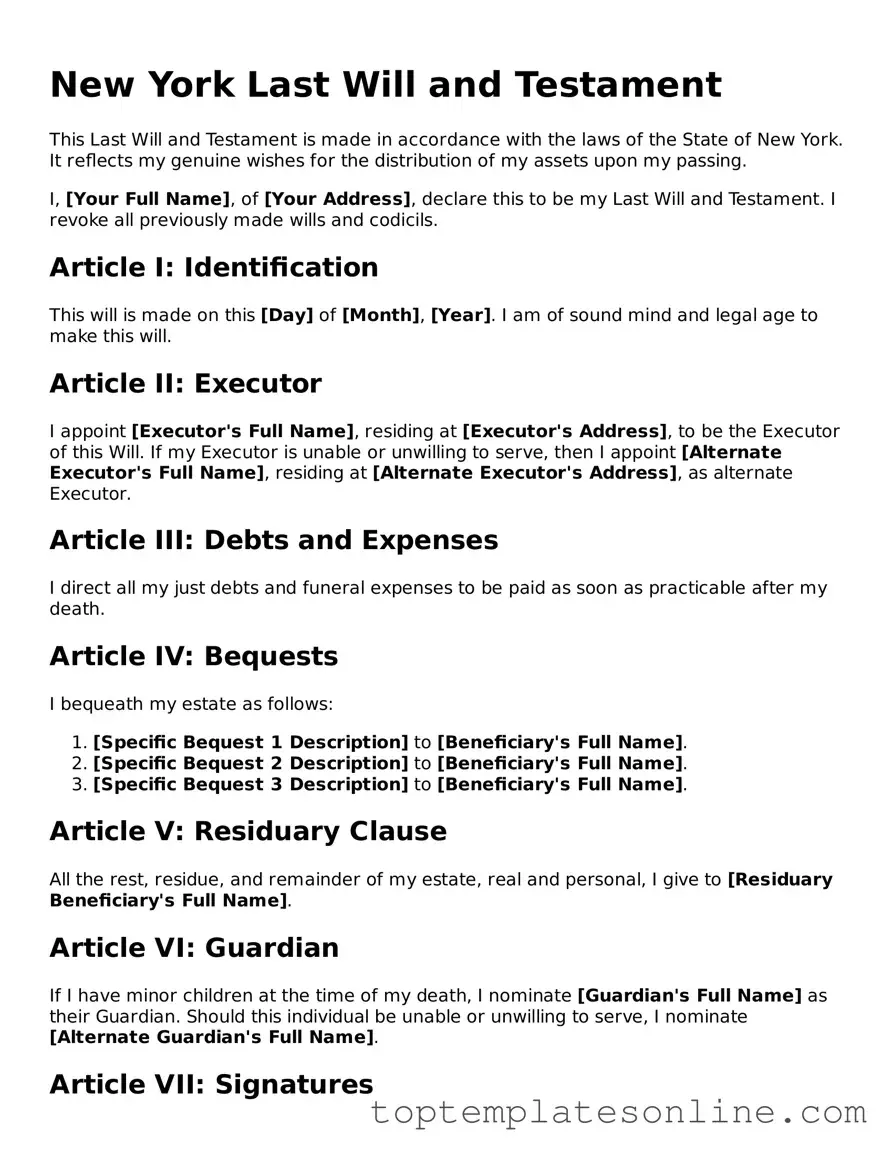Creating a Last Will and Testament is an essential step in ensuring that your wishes are honored after your passing. In New York, this legal document outlines how your assets will be distributed, who will care for your minor children, and who will execute your estate. The form typically includes important sections such as the identification of the testator, the appointment of an executor, and detailed instructions on asset distribution. It also allows you to name guardians for any dependents, ensuring they are cared for by someone you trust. Additionally, the will must be signed and witnessed according to New York law to be valid. Understanding these components can help you navigate the process smoothly and ensure that your final wishes are respected. Whether you are starting from scratch or revising an existing will, knowing what to include can make a significant difference in how your estate is handled. This article will explore the New York Last Will and Testament form, providing insights into its structure and importance in estate planning.
